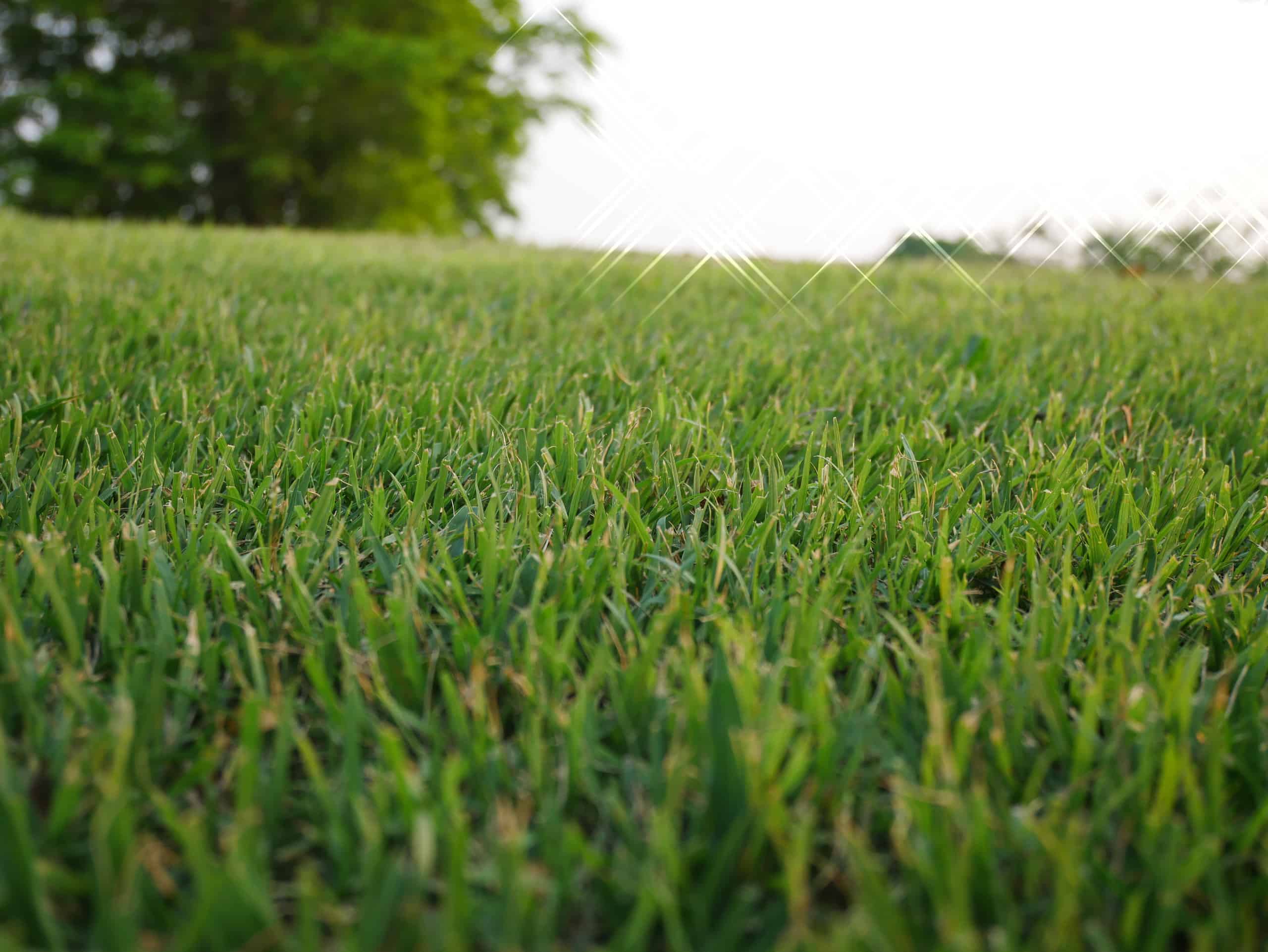For many homeowners, a lush green lawn is a dream come true. However, maintaining a healthy lawn is easier said than done. It requires more than just watering and mowing from time to time. Another important aspect of keeping your lawn healthy and happy is aeration. But when is the best time to aerate your lawn? With so many factors to consider, it’s easy to get confused. But don’t worry, we’ve got you covered! In this article, we’ll guide you through the best time to aerate your lawn. We’ll also share some tips and tricks to help you achieve vibrant and healthy grass all year long.
Why You Should Aerate Your Lawn
Over time the soil in your lawn tends to compact. When the surface of the soil is too tightly packed, water can’t soak in and oxygen can’t reach the roots. This makes it tough for those little roots to grow big and strong. This can lead to thin and brittle turf or bald spots. That is why many people opt for aeration.
When you aerate your lawn, you use a unique tool that makes little holes in the ground and pulls out plugs of soil. This leaves behind big holes that let moisture and nutrients flow back into the lawn. It also allows more oxygen to flow down to those tiny roots, giving them the boost they need to grow and thrive. In addition, post-aeration is a great time to add seeds, lime, and fertilizer down into the soil where they can do the most good.
Aerating also breaks up the pesky thatch that builds up on the surface of your lawn, which helps to ensure that air and water can circulate freely. This helps to keep your grass looking vibrant and lush. It also helps to prevent unwanted visitors like pests and diseases from making themselves at home in your turf.
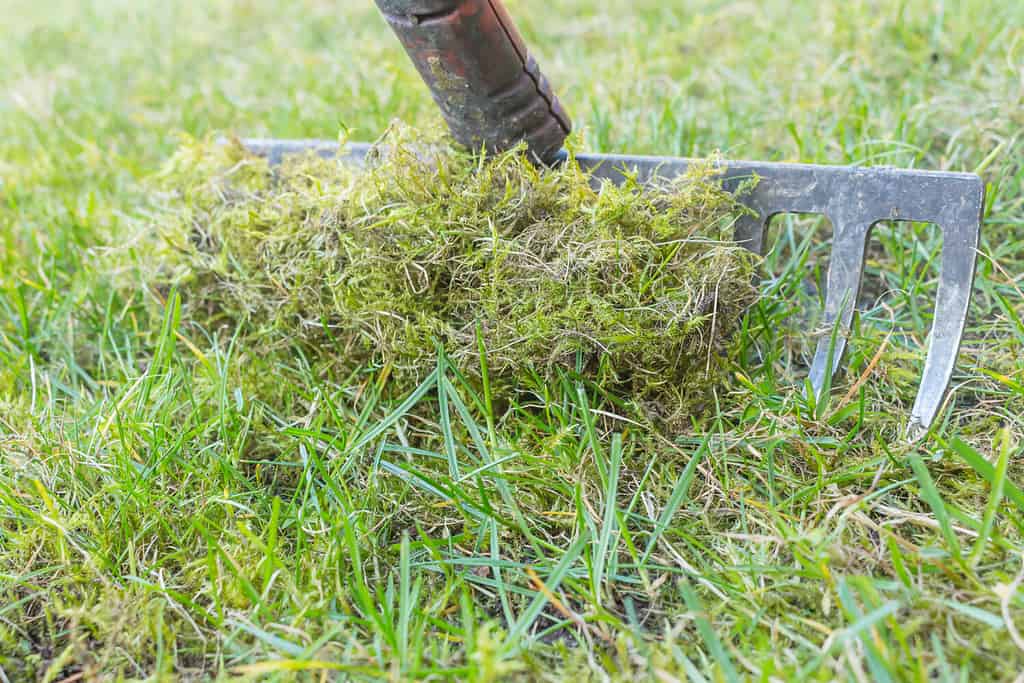
Over time, leaves, stems, and moss can build up on your lawn when it’s trapped between grass and soil.
©philmillster/Shutterstock.com
When Is the Best Time to Aerate Your Lawn?
The best time to aerate your lawn is when the grass is in its prime growing season. This will allow it to recover more quickly. You should never aerate when your lawn is dormant. Trying to aerate a dormant lawn is like trying to wake up someone in the middle of the night — it’s not going to go well. The best time to aerate your lawn is when the grass is growing vigorously. This allows the grass to benefit from all the extra nutrients that you can provide it.
Knowing your lawn’s prime growing season depends on a few factors: the type of grass you have, and where you live.
The easiest way to tell if you have warm-season or cool-season grass is by researching the variety of grass you have in your yard. Or you can simply observe your grass during the spring and summer months. Does your lawn thrive in the cooler spring temperatures? Or does it really start to take off during the hot summer months?
The Best Time to Aerate Lawns with Cool-Season Grass
For cool-season grasses like ryegrass, bluegrass, and fescue, the best time to aerate your lawn is either in the spring or the fall. That’s when your turf will be at its best and the little blades of grass are ready to soak up all the water, oxygen, and nutrients that they can get. Cool-season grass tends to grow best in the northern part of the United States. It turns green earlier in the spring than other types of grass. It also usually stays green well into the fall months.
Spring Aeration: Things in the spring are a little cooler and slower pace. This means that the little holes made by the aerator have plenty of time to heal up before the grass starts growing like crazy again. In addition, if you’re worried about issues with soggy soil or moss, aerating in the spring can help improve drainage and keep your lawn looking fresh and clean.
Fall Aeration: On the other hand, if you aerate your lawn in the fall, you’re giving your grass the tools it needs to stay healthy and green, even when winter starts to creep in. Thanks to all those little holes you’re making, your lawn can more easily absorb nutrients and water. That means your lawn will have the nutrients it needs to withstand the cold months.
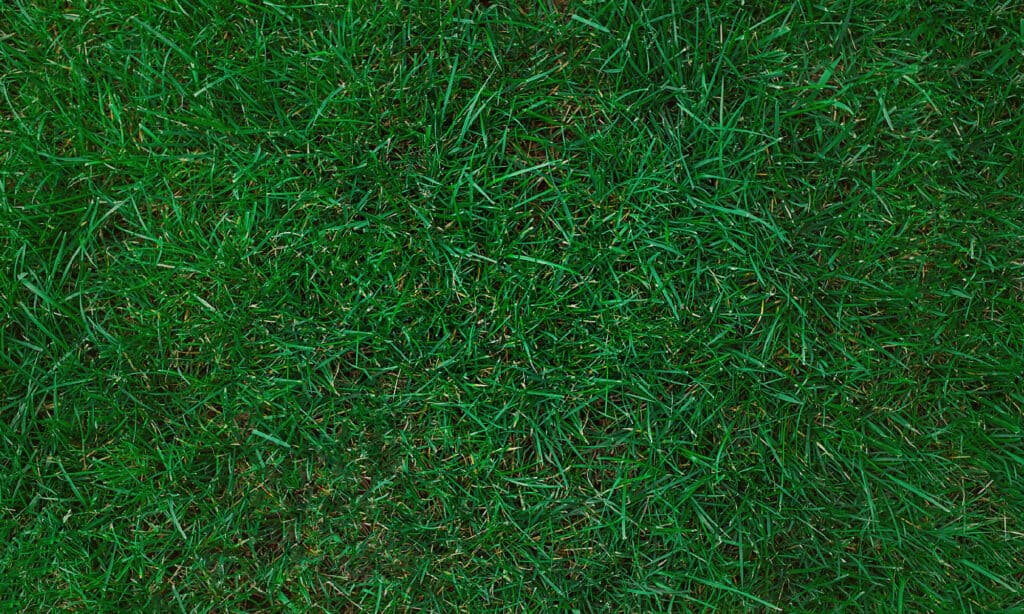
Kentucky bluegrass is a popular type of cool-season grass that many people use for their lawns.
©iStock.com/KacieBuccieri
The Best Time to Aerate Lawns with Warm-Season Grass
If you have warm-season grasses like St. Augustine grass, Zoysia grass, or Bermuda grass, then you will want to aerate your lawn in the late spring or early summer months. It’s best to hold off doing it until June or July. This is when things really start heating up and your lawn is ready to take on new action.
Warm-season grass tends to thrive in the southern parts of the United States where the temperatures are hotter. It takes a little longer to turn green in the spring than other types of grass. It also starts to lose its green color earlier in the fall as well.
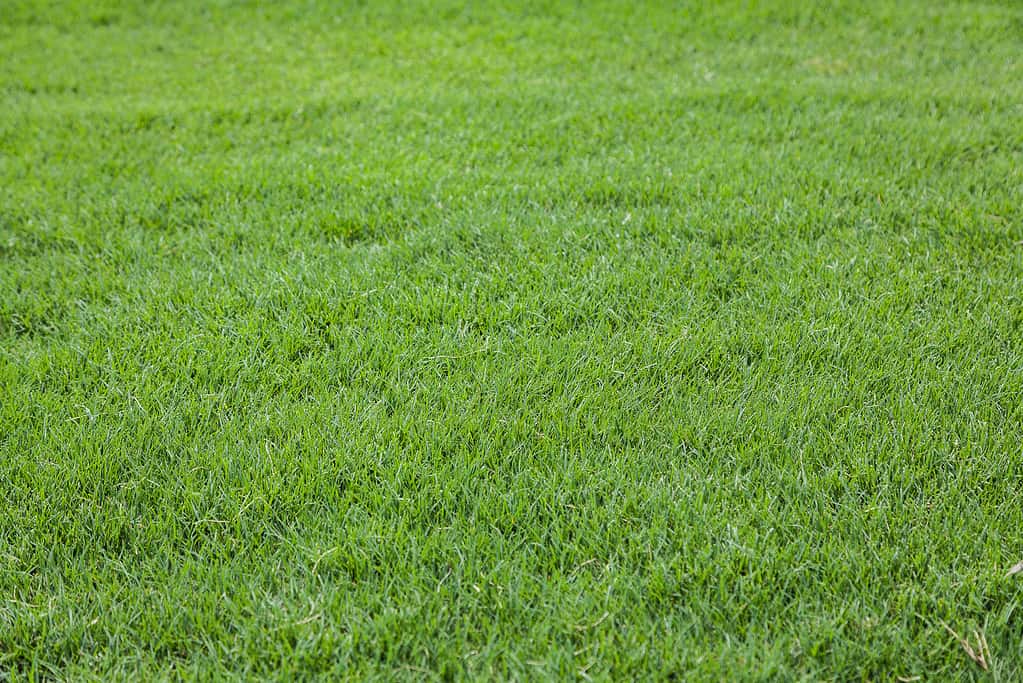
This close-up of Bermuda grass shows just how lush and green it can be for a perfect summer lawn.
©iStock.com/JPratt
Where You Live
The second important factor to consider when it comes to the best time to aerate your lawn is your geographical location, or where you live. If you live in a place with mild summers and cool fall weather, then you can stick to the usual advice and aerate when the weather is cooler and your grass is growing more slowly. However, if you’re in an area where it gets super hot and sticky in the summer, it’s usually best to aerate in the late spring or early summer instead. That way your grass has plenty of time to recover before the heat really sets in and starts to stress it out.
Tips and Tricks for Aerating Your Lawn:
- If you’re planning on doing some overseeding, aerating beforehand creates all sorts of nooks and crannies for the new seeds to settle into. That means better seed-to-soil contact, which also means a healthier happier lawn overall.
- Before you aerate your lawn, make sure that not only is the grass at the optimal growing phase but that the soil is just right as well: not too wet, and not too dry. If your lawn is feeling a little parched, give it a good soak the day before you start aerating.
- When you aerate your lawn, do it in a checkerboard pattern to ensure that you cover everything evenly.
- Make at least two passes with your aerator if your lawn is already in good condition. However, if your lawn has obvious bald spots or problem areas, aim for two to four passes. The more soil plugs and holes you create in your lawn, the happier your grass will be.
- After aerating your lawn, don’t worry about those weird little plugs of soil left behind. They’ll decompose on their own and just a few short weeks.
- After you have aerated, water your lawn to help the soil settle and encourage the grass to grow.

Aeration helps to give your grass more room to grow, as well as better access to oxygen and water.
©iStock.com/Kolomiiets Iryna
Power vs. Manual Aerators
When it comes to aerating your lawn, you want to make sure you choose the right equipment to get the job done. There are two types of aerators that you can use: manual and power. If you have a small yard or just a few heavily trafficked areas that need some extra love, a manual aerator works great. These handy tools are easy to use and are great for getting into tight spaces.
However, if you have a larger yard or you want to get the job done quickly and efficiently, a power aerator may be the better choice. These bad boys are fueled by gasoline and can cover a lot of ground in a short amount of time. In addition, they save you from having to do all the heavy lifting yourself.
If you’ve never used a power aerator before, be sure to familiarize yourself with the instruction manual. Always follow the instructions and safety protocols carefully. You can use the aerator more than once on areas where your turf is especially compacted.
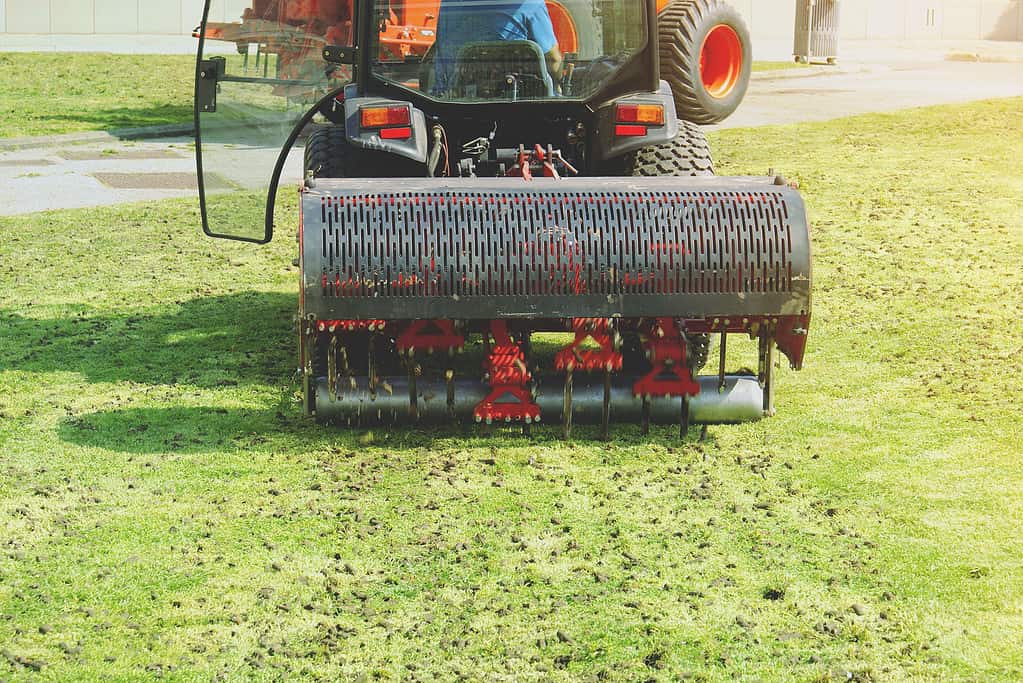
Businesses and public areas with large grassy areas typically use power aerators to get the job done.
©iStock.com/MAsummerbreak
How Often Should You Aerate Your Lawn?
If your lawn gets a lot of traffic, like kids playing or pets running around on it, then you should aim to aerate your lawn once a year, or once every two years. However, if your lawn doesn’t see quite that much action, then you can get away with aerating it every two to four years.
How to Tell if Your Lawn Needs to Be Aerated
If you notice patchy areas in your lawn where the grass seems to be thinner or missing, it could be due to soil compaction. When the soil in your yard becomes too tightly packed, the roots of your grass can’t absorb all the nutrients and water they need. These tightly packed areas can produce unsightly patches or bald spots in your lawn.
Another way to tell that your lawn needs to be aerated is if your grass starts looking discolored, with yellow or light brown spots. This often tells you that there are areas in your lawn that are not able to absorb water properly and are not getting the nutrients that they need.
In addition, you may also notice puddles of water from your sprinkler or even from the rain. This is another sign that your lawn is not properly absorbing the water and soaking in those vital nutrients.
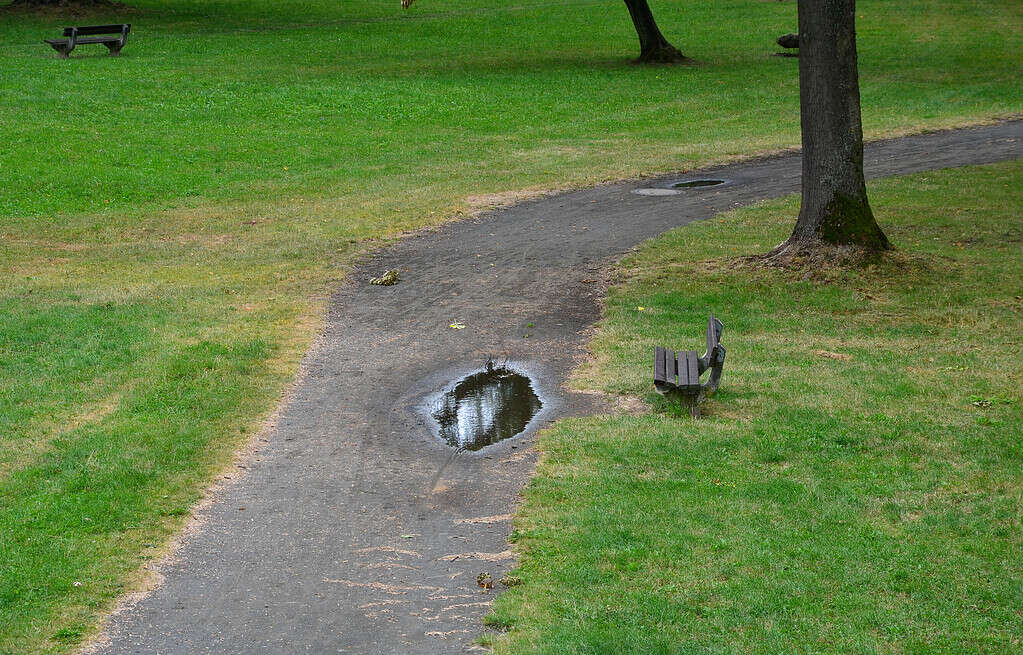
When the soil becomes too compact, it cannot absorb water and necessary nutrients.
©iStock.com/beekeepx
Bonus: When Is the Best Time to Overseed Your Lawn?
Many people choose to overseed their lawns after aerating. Overseeding helps to strengthen your entire lawn and fill in any balding patches. The best time to overseed depends on which type of grass you have and where you live. Although you should always check for local recommendations based on your specific area, here are some overall guidelines:
- Pacific Northwest: It’s best to plant or overseed new cool-season grasses about six weeks before the first projected snowfall if you live in Oregon or Washington. This will give your new grass the best chance to take root and thrive.
- Southern States: Prime times for overseeding in southern states like Georgia, Texas, and Florida are usually in April, May, and June. However, the best time may vary depending on soil temperatures. You want your warm-season grass to have a cozy environment to germinate in and establish its roots.
- Southwestern States: Early spring is the perfect time for overseeding in southwestern states like California and Arizona. This helps to ensure that your lawn stays lush and green all year long.
- Northwestern States: It’s best to start overseeding your lawn in August or September if you live in a northwestern State like Maine or Vermont. This gives your grass time to grow and establish its roots before the winter cold sets in.
- Midwest: For Midwesterners, overseeding your lawn by the end of August or the beginning of September at the latest is your best bet. This applies to midwestern states like Minnesota, Illinois, and Missouri. However, weather conditions can vary quite a bit depending on how far north you live. So, be sure to check local recommendations for your specific area.
Are There Any Alternatives to a Traditional Monoculture Grass Lawn?
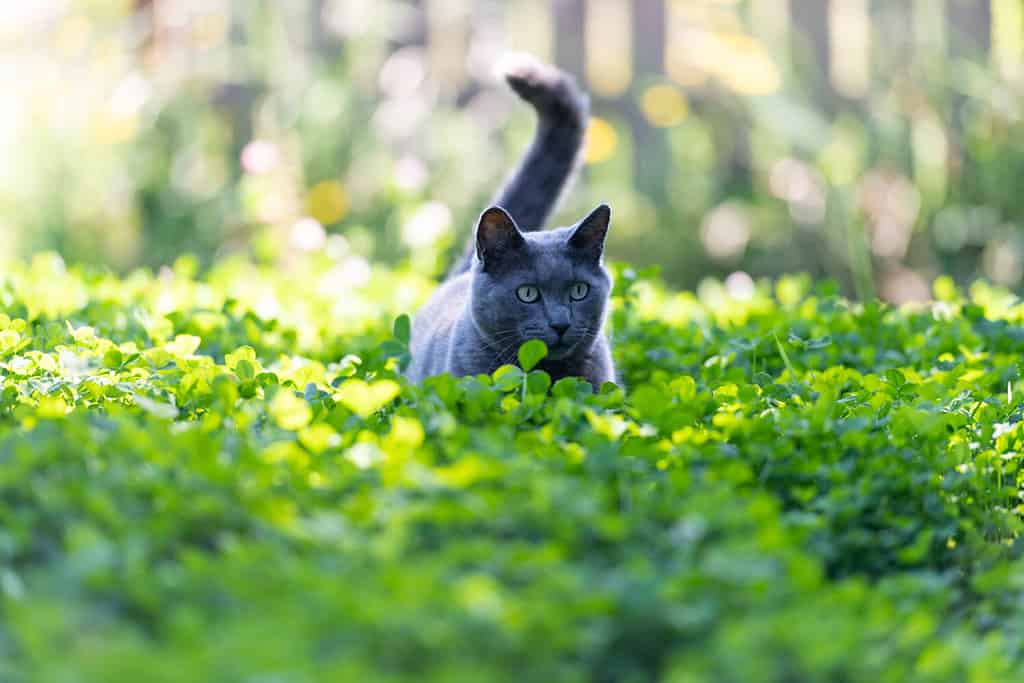
Did you know that you never need to aerate or de-thatch a cover lawn, and you rarely need to mow it?
©Anna Hoychuk/Shutterstock.com
Yes! If you’re looking to spruce up your outdoor space without traditional monoculture grass, there are plenty of alternatives to choose from. Some of these options include:
- Native plants—Planting native species around your yard can help attract pollinators and other beneficial wildlife. Not only is this a great way to add biodiversity and beauty to your lawn, but it can also help reduce the need for fertilizer and pesticides while reducing water usage as well.
- Rain gardens—A rain garden is a planted area that collects and filters runoff from your roof, driveway, sidewalk, or other hard surfaces. Not only are these an attractive addition to any yard, but they help protect local water sources by filtering pollutants before they can enter the waterways.
- Xeriscaping—Xeriscaping is a landscaping technique that uses drought-tolerant plants to reduce water usage and create a beautiful outdoor space. This can be done by grouping different types of plants together, using native species, and incorporating mulch or other ground covers to help retain moisture.
- Clover Lawns— Clover lawns are a great alternative to traditional monoculture grass. Clover is an attractive, low-maintenance plant that can tolerate dry and shadier conditions than many other types of grasses. It’s also known for its ability to fix nitrogen in the soil, making it more nutrient-rich. On top of that, clover is incredibly resistant to weeds and diseases, so you don’t have to use as much fertilizer or pesticides as you would with traditional turfgrass.
Thank you for reading! Have some feedback for us? Contact the AZ Animals editorial team.

